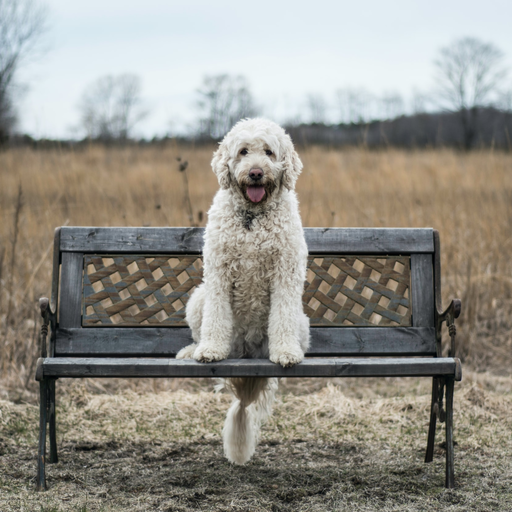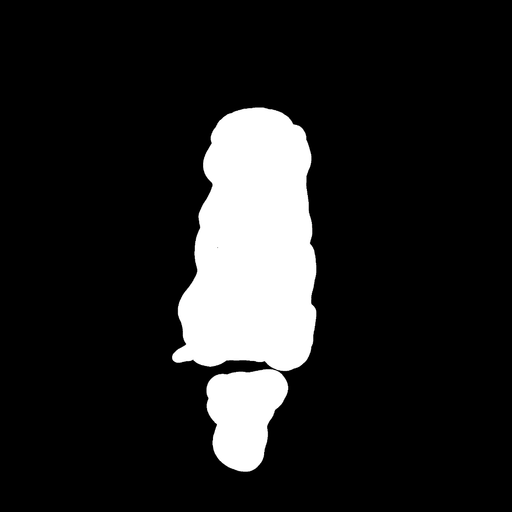---
license: openrail++
base_model: stabilityai/stable-diffusion-xl-base-1.0
tags:
- stable-diffusion-xl
- stable-diffusion-xl-diffusers
- text-to-image
- diffusers
- inpainting
inference: false
---
# SD-XL Inpainting 0.1 Model Card

SD-XL Inpainting 0.1 is a latent text-to-image diffusion model capable of generating photo-realistic images given any text input, with the extra capability of inpainting the pictures by using a mask.
The SD-XL Inpainting 0.1 was initialized with the `stable-diffusion-xl-base-1.0` weights. The model is trained for 40k steps at resolution 1024x1024 and 5% dropping of the text-conditioning to improve classifier-free classifier-free guidance sampling. For inpainting, the UNet has 5 additional input channels (4 for the encoded masked-image and 1 for the mask itself) whose weights were zero-initialized after restoring the non-inpainting checkpoint. During training, we generate synthetic masks and, in 25% mask everything.
## How to use
```py
from diffusers import AutoPipelineForInpainting
from diffusers.utils import load_image
import torch
pipe = AutoPipelineForInpainting.from_pretrained("diffusers/stable-diffusion-xl-1.0-inpainting-0.1", torch_dtype=torch.float16, variant="fp16").to("cuda")
img_url = "https://raw.githubusercontent.com/CompVis/latent-diffusion/main/data/inpainting_examples/overture-creations-5sI6fQgYIuo.png"
mask_url = "https://raw.githubusercontent.com/CompVis/latent-diffusion/main/data/inpainting_examples/overture-creations-5sI6fQgYIuo_mask.png"
image = load_image(img_url).resize((1024, 1024))
mask_image = load_image(mask_url).resize((1024, 1024))
prompt = "a tiger sitting on a park bench"
generator = torch.Generator(device="cuda").manual_seed(0)
image = pipe(
prompt=prompt,
image=image,
mask_image=mask_image,
guidance_scale=8.0,
num_inference_steps=20, # steps between 15 and 30 work well for us
strength=0.99, # make sure to use `strength` below 1.0
generator=generator,
).images[0]
```
**How it works:**
`image` | `mask_image`
:-------------------------:|:-------------------------:|
 |
|  `prompt` | `Output`
:-------------------------:|:-------------------------:|
a tiger sitting on a park bench |
`prompt` | `Output`
:-------------------------:|:-------------------------:|
a tiger sitting on a park bench |  ## Model Description
- **Developed by:** The Diffusers team
- **Model type:** Diffusion-based text-to-image generative model
- **License:** [CreativeML Open RAIL++-M License](https://huggingface.co/stabilityai/stable-diffusion-xl-base-1.0/blob/main/LICENSE.md)
- **Model Description:** This is a model that can be used to generate and modify images based on text prompts. It is a [Latent Diffusion Model](https://arxiv.org/abs/2112.10752) that uses two fixed, pretrained text encoders ([OpenCLIP-ViT/G](https://github.com/mlfoundations/open_clip) and [CLIP-ViT/L](https://github.com/openai/CLIP/tree/main)).
## Uses
### Direct Use
The model is intended for research purposes only. Possible research areas and tasks include
- Generation of artworks and use in design and other artistic processes.
- Applications in educational or creative tools.
- Research on generative models.
- Safe deployment of models which have the potential to generate harmful content.
- Probing and understanding the limitations and biases of generative models.
Excluded uses are described below.
### Out-of-Scope Use
The model was not trained to be factual or true representations of people or events, and therefore using the model to generate such content is out-of-scope for the abilities of this model.
## Limitations and Bias
### Limitations
- The model does not achieve perfect photorealism
- The model cannot render legible text
- The model struggles with more difficult tasks which involve compositionality, such as rendering an image corresponding to “A red cube on top of a blue sphere”
- Faces and people in general may not be generated properly.
- The autoencoding part of the model is lossy.
- When the strength parameter is set to 1 (i.e. starting in-painting from a fully masked image), the quality of the image is degraded. The model retains the non-masked contents of the image, but images look less sharp. We're investing this and working on the next version.
### Bias
While the capabilities of image generation models are impressive, they can also reinforce or exacerbate social biases.
## Model Description
- **Developed by:** The Diffusers team
- **Model type:** Diffusion-based text-to-image generative model
- **License:** [CreativeML Open RAIL++-M License](https://huggingface.co/stabilityai/stable-diffusion-xl-base-1.0/blob/main/LICENSE.md)
- **Model Description:** This is a model that can be used to generate and modify images based on text prompts. It is a [Latent Diffusion Model](https://arxiv.org/abs/2112.10752) that uses two fixed, pretrained text encoders ([OpenCLIP-ViT/G](https://github.com/mlfoundations/open_clip) and [CLIP-ViT/L](https://github.com/openai/CLIP/tree/main)).
## Uses
### Direct Use
The model is intended for research purposes only. Possible research areas and tasks include
- Generation of artworks and use in design and other artistic processes.
- Applications in educational or creative tools.
- Research on generative models.
- Safe deployment of models which have the potential to generate harmful content.
- Probing and understanding the limitations and biases of generative models.
Excluded uses are described below.
### Out-of-Scope Use
The model was not trained to be factual or true representations of people or events, and therefore using the model to generate such content is out-of-scope for the abilities of this model.
## Limitations and Bias
### Limitations
- The model does not achieve perfect photorealism
- The model cannot render legible text
- The model struggles with more difficult tasks which involve compositionality, such as rendering an image corresponding to “A red cube on top of a blue sphere”
- Faces and people in general may not be generated properly.
- The autoencoding part of the model is lossy.
- When the strength parameter is set to 1 (i.e. starting in-painting from a fully masked image), the quality of the image is degraded. The model retains the non-masked contents of the image, but images look less sharp. We're investing this and working on the next version.
### Bias
While the capabilities of image generation models are impressive, they can also reinforce or exacerbate social biases.
 |
|  `prompt` | `Output`
:-------------------------:|:-------------------------:|
a tiger sitting on a park bench |
`prompt` | `Output`
:-------------------------:|:-------------------------:|
a tiger sitting on a park bench |  ## Model Description
- **Developed by:** The Diffusers team
- **Model type:** Diffusion-based text-to-image generative model
- **License:** [CreativeML Open RAIL++-M License](https://huggingface.co/stabilityai/stable-diffusion-xl-base-1.0/blob/main/LICENSE.md)
- **Model Description:** This is a model that can be used to generate and modify images based on text prompts. It is a [Latent Diffusion Model](https://arxiv.org/abs/2112.10752) that uses two fixed, pretrained text encoders ([OpenCLIP-ViT/G](https://github.com/mlfoundations/open_clip) and [CLIP-ViT/L](https://github.com/openai/CLIP/tree/main)).
## Uses
### Direct Use
The model is intended for research purposes only. Possible research areas and tasks include
- Generation of artworks and use in design and other artistic processes.
- Applications in educational or creative tools.
- Research on generative models.
- Safe deployment of models which have the potential to generate harmful content.
- Probing and understanding the limitations and biases of generative models.
Excluded uses are described below.
### Out-of-Scope Use
The model was not trained to be factual or true representations of people or events, and therefore using the model to generate such content is out-of-scope for the abilities of this model.
## Limitations and Bias
### Limitations
- The model does not achieve perfect photorealism
- The model cannot render legible text
- The model struggles with more difficult tasks which involve compositionality, such as rendering an image corresponding to “A red cube on top of a blue sphere”
- Faces and people in general may not be generated properly.
- The autoencoding part of the model is lossy.
- When the strength parameter is set to 1 (i.e. starting in-painting from a fully masked image), the quality of the image is degraded. The model retains the non-masked contents of the image, but images look less sharp. We're investing this and working on the next version.
### Bias
While the capabilities of image generation models are impressive, they can also reinforce or exacerbate social biases.
## Model Description
- **Developed by:** The Diffusers team
- **Model type:** Diffusion-based text-to-image generative model
- **License:** [CreativeML Open RAIL++-M License](https://huggingface.co/stabilityai/stable-diffusion-xl-base-1.0/blob/main/LICENSE.md)
- **Model Description:** This is a model that can be used to generate and modify images based on text prompts. It is a [Latent Diffusion Model](https://arxiv.org/abs/2112.10752) that uses two fixed, pretrained text encoders ([OpenCLIP-ViT/G](https://github.com/mlfoundations/open_clip) and [CLIP-ViT/L](https://github.com/openai/CLIP/tree/main)).
## Uses
### Direct Use
The model is intended for research purposes only. Possible research areas and tasks include
- Generation of artworks and use in design and other artistic processes.
- Applications in educational or creative tools.
- Research on generative models.
- Safe deployment of models which have the potential to generate harmful content.
- Probing and understanding the limitations and biases of generative models.
Excluded uses are described below.
### Out-of-Scope Use
The model was not trained to be factual or true representations of people or events, and therefore using the model to generate such content is out-of-scope for the abilities of this model.
## Limitations and Bias
### Limitations
- The model does not achieve perfect photorealism
- The model cannot render legible text
- The model struggles with more difficult tasks which involve compositionality, such as rendering an image corresponding to “A red cube on top of a blue sphere”
- Faces and people in general may not be generated properly.
- The autoencoding part of the model is lossy.
- When the strength parameter is set to 1 (i.e. starting in-painting from a fully masked image), the quality of the image is degraded. The model retains the non-masked contents of the image, but images look less sharp. We're investing this and working on the next version.
### Bias
While the capabilities of image generation models are impressive, they can also reinforce or exacerbate social biases.